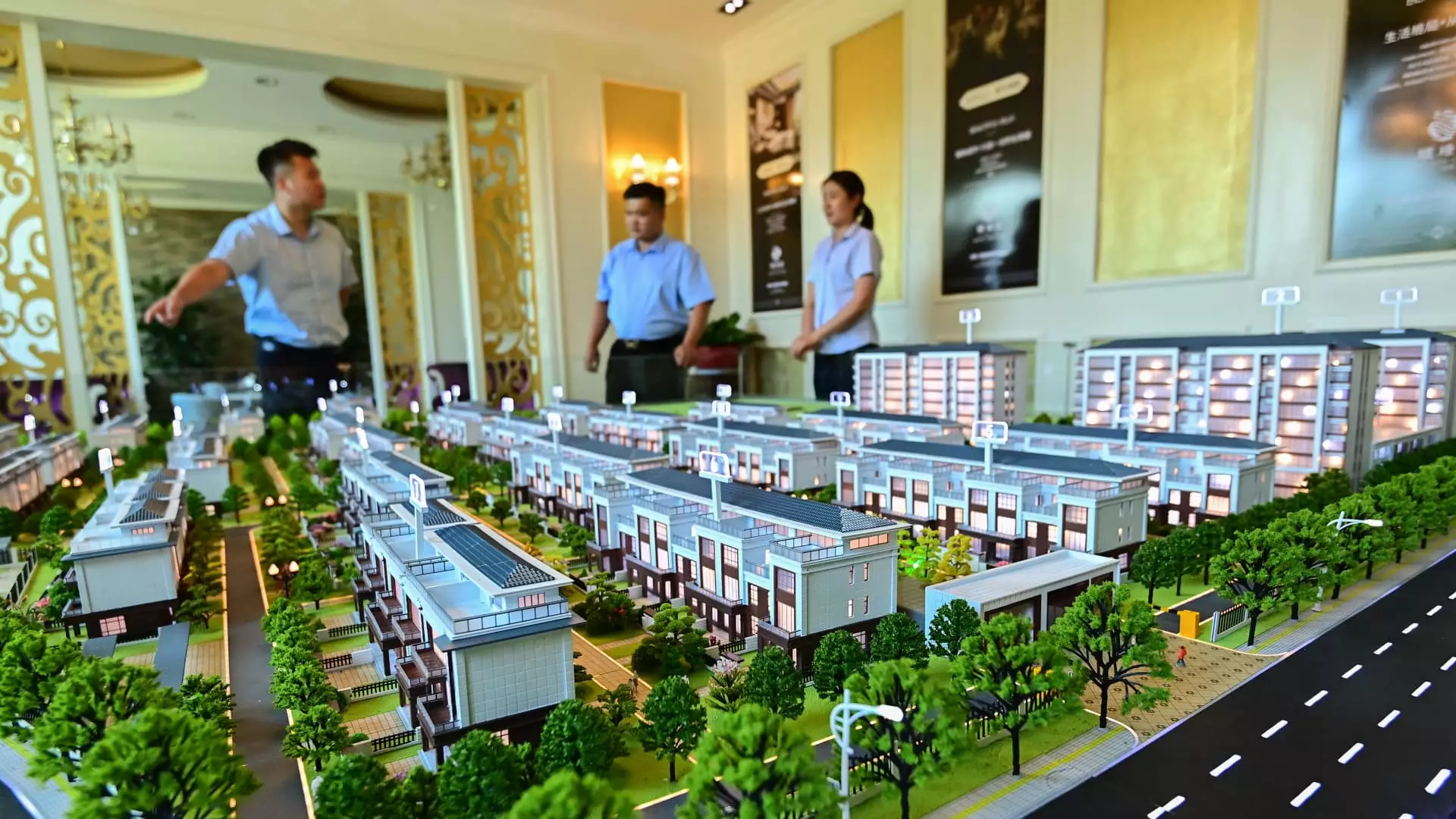China’s property market, once a beacon of economic growth, now stands on the precipice of a crisis fueled by a stark reality: an imploding population. As estimates by Goldman Sachs indicate, demand for new homes in urban China is projected to plummet to under 5 million units annually in the coming years, a staggering decline from the zenith of 20 million units in 2017. The implications of this demographic shift are profound and multifaceted, shaping not only the economy but the very fabric of society. As the nation’s population diminishes, the traditional notions of growth and property investment become obsolete, giving way to a bleak landscape where homes lose their value and purpose.
The World Bank underscores this trend with sobering projections, highlighting that the population could dip below 1.39 billion by 2035—a drop highlighting the pressing issues of lower birth rates coupled with an increasingly aging society. Data from the Economist Intelligence Unit suggests that the annual loss of home demand could reach 0.5 million units in this decade, and a staggering 1.4 million units in the subsequent decade. This demographic reality is not just a statistical worry; it signals the unraveling of generations of economic stability long tied to the real estate sector.
Fighting an Uphill Battle for Birth Rates
While the Chinese government has made recent efforts to counteract falling fertility rates—relaxing the one-child policy and offering financial incentives—the results have been disheartening. The number of newborns in the country continues to dwindle, illustrating a social malaise that resists any quick fixes. Young adults, constrained by stagnant incomes and a faltering job market, are increasingly choosing to delay starting families, prioritizing career stability over childbearing. The reluctance to embrace parenthood is exacerbated by a shaky social security system, and despite government rhetoric promoting larger families, these measures fail to resolve the underlying economic pressures felt by many.
Moreover, the closure of nearly 36,000 kindergartens in just two years offers a stark testament to the reality facing parents today. With children’s enrollment figures in preschools plummeting by over 10 million, the educational landscape is transforming, dragging down real estate values tied to school districts. Once seen as golden investments grounded in strong demand, property values near quality educational institutions are now in freefall, diminishing wealth for many homeowners who gambled on a steadily increasing market.
A Market in Freefall
As the ramifications of this demographic crisis unfold, the real estate sector struggles to regain its footing. Earlier this year, new home prices recorded their most significant drop in seven months, revealing a painful stagnation that has persisted since late 2020. Despite the efforts of both central and local governments to staunch the decline, the market’s recovery trajectory remains dishearteningly flat. Sales in major cities reveal a grim narrative, with new home sales declining by 11% year on year, worsening from a mere 3% decrease earlier in the year.
For those holding investment properties, the reality is even harsher. The fear of continued price declines has turned many into reluctant sellers, with a likely shift toward more owner-occupiers in the market. Goldman Sachs estimates suggest this trend may persist indefinitely unless significant reforms to stimulate demand are enacted.
Urbanization: A Double-Edged Sword
Contrary to some optimistic projections that urbanization may compensate for the demographic downturn, the brutal truth is that urban growth won’t be enough to offset the plummeting birth rates. Although urban housing demand may experience a temporary boost from individuals seeking upgraded living spaces, it isn’t a panacea for a market staring down the barrel of demographic decline. Industry analysts, like William Wu from Daiwa Capital Markets, emphasize that the pressure caused by shrinking demographics is formidable and will loom over the property market for decades to come.
Investors must confront a paradigm shift where traditional metrics of success and growth no longer apply. With a declining population, the cycle of rising property values, once taken for granted, is at risk of being completely undone. The vast implications for economic stability, investment strategies, and urban planning cannot be overstated, as what was once viewed as a path to wealth may soon transform into an economic albatross for those caught in the housing snares of the past.
The landscape of China’s real estate market is undeniably foreboding; entrenched complex social and economic issues promise to challenge the optimistic narratives of growth and development. Those who once saw China as the epitome of modern growth must now grapple with a startling reality: the promise of prosperity is being undermined by the very demographics necessary to sustain it.


Leave a Reply